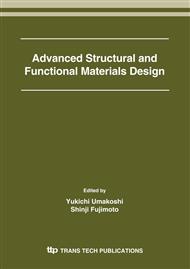p.73
p.79
p.85
p.91
p.97
p.103
p.107
p.111
p.117
Acetate and Chloride Effects on Hydrogen Production across Crevices
Abstract:
Crevice corrosion experiments on pure iron were carried out in a 0.5 M acetate buffer with varied chloride concentrations. Changes in resultant currents and morphology due to crevice attack were explained by IR potential drop mechanisms. The specimens experienced potential drop inside the crevice, which resulted in the formation of passive, active, and hydrogen evolution regions. The passive region did not exist in the electrolyte containing 0.05 M and 0.5 M chloride. Hydrogen evolution, which occurred inside the crevice was measured on rear side of the specimen using hydrogen permeation test. The results suggest that the hydrogen produced inside the crevice is measurable using a permeation test. The entry of diffusible hydrogen showed a significant increase with the addition of chloride into the acetate buffer.
Info:
Periodical:
Pages:
97-102
Citation:
Online since:
April 2006
Authors:
Keywords:
Price:
Сopyright:
© 2006 Trans Tech Publications Ltd. All Rights Reserved
Share:
Citation:


